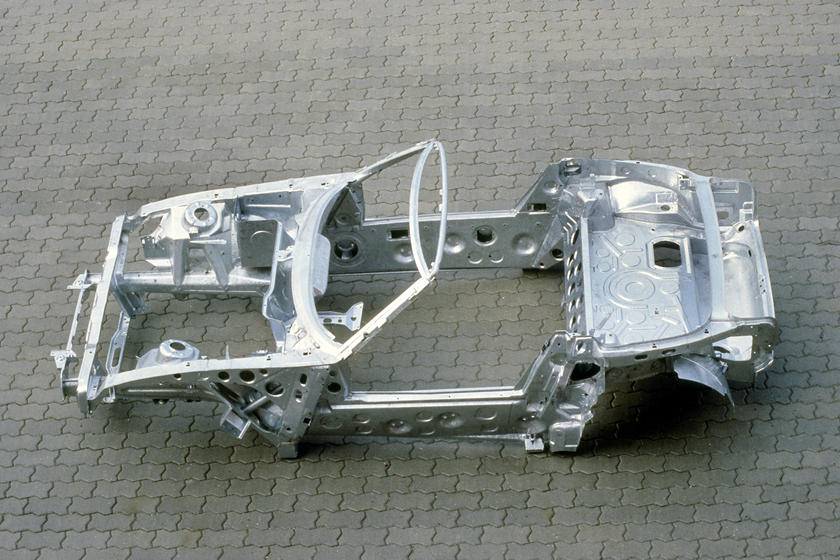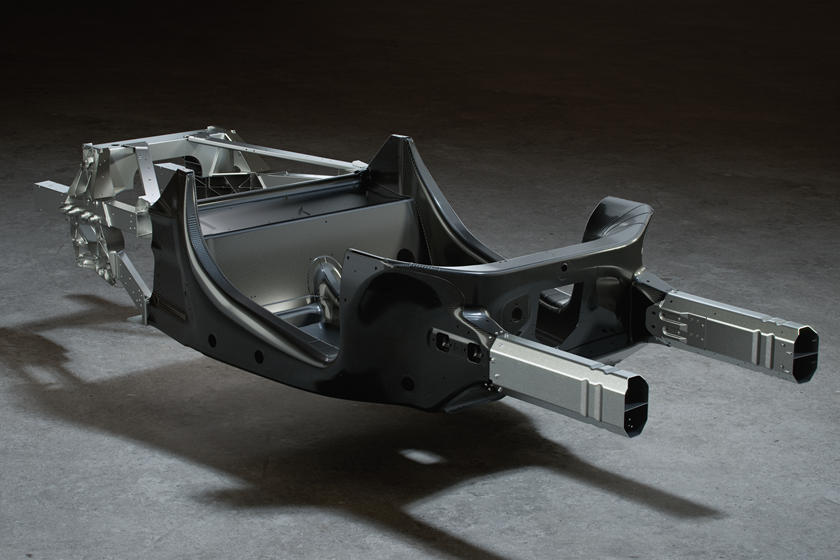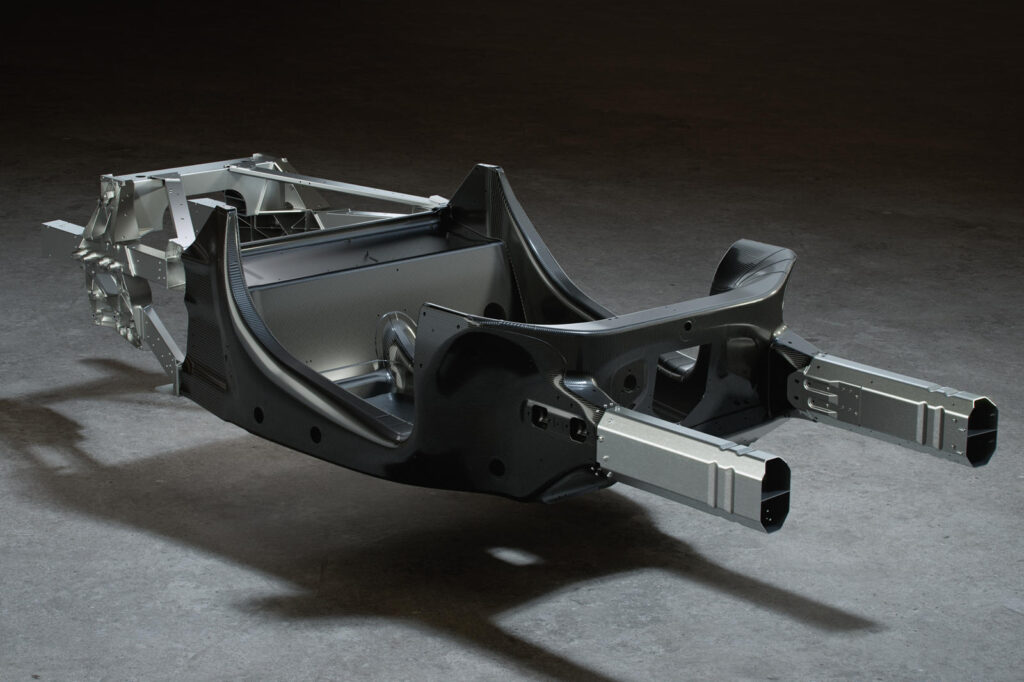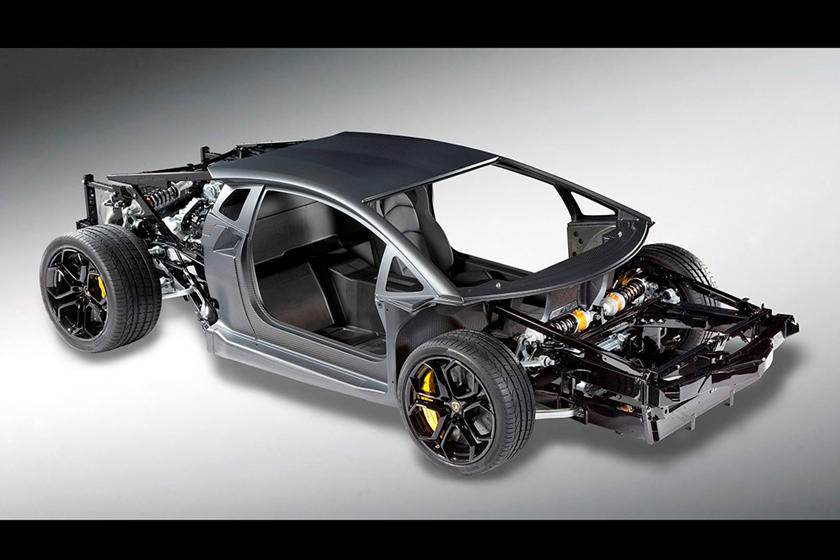It is the pervasive kind of automobile development at this time.
- What’s Monocoque Development?
- A Quick Historical past of the Unibody and Monocoque Ideas
- Monocoque vs. Unibody vs. Physique-On-Body Development
- Conclusion
- FAQs
What’s Monocoque Development?
The definition of monocoque development pertains to “single-shell” automobile development wherein the complete exterior pores and skin of the monocoque automobile physique is a structural, stress-bearing shell, much like an eggshell. It’s usually incorrectly utilized to highway vehicles which ought to moderately be known as having semi-monocoque or unibody-frame designs.
Whereas unibody and monocoque development are generally used interchangeably, they don’t seem to be truly the identical. We outline unibody as a unitized car physique with tubes, bulkheads, and field sections that present most of its power, whereas a real monocoque construction will get its power from the complete exterior ‘pores and skin’. This stands in distinction to a body-on-frame design wherein the ladder body beneath supplies many of the power and a non-structural physique is simply bolted on high of it.
 BMW
BMW
A Quick Historical past of the Unibody and Monocoque Ideas
The primary unibody automobile was the 1922 Lancia Lambda, however solely a thousand had been produced. In 1930, Joseph Ledwinka, an engineer on the Budd Firm within the USA (ThyssenKrupp Budd at this time), designed a full unitary prototype physique, which French automaker Citroën purchased to make use of for his or her mass-production 1934 Citroën Traction Avant. Budd equipped a model of this to Chrysler for its 1934 Chrysler Airflow, making these two the primary true unitary-design mass-production vehicles. A real monocoque body was first utilized in he 1962 Lotus 25 System 1 automobile, adopted by the carbon-fiber-reinforced construction of the McLaren MP4/1 in 1981. In 1990, the Jaguar XJR-15 was developed, changing into the primary producton automobile with a carbon-fiber monocoque.
For regular sedan, hatchback, crossover, and station wagon vehicles, the unibody design is the preferred strategy to construct a car, though some SUVs and most vans nonetheless use body-on-frame development at this time. The monocoque chassis design is especially utilized in sports activities vehicles and race vehicles, just like the McLaren 720s and Bugatti Chrion.
 McLaren
McLaren
Monocoque vs. Unibody vs. Physique-On-Body Development
True monocoque chassis designs are uncommon in highway vehicles at this time, however the next advantages are price mentioning:
- Will be extraordinarily gentle weight: buit with carbon fiber and/or aluminum, these are perfect for super- or hypercars that have to go as quick as attainable.
- Extra economical to supply as the quantity of materialsneeded to offer power to the automobile is way much less.
- Good use of house are the entire construction is one outer shell.
- Even physique panels add to the power of the setup, so passenger security is improved.
- Superior torsional rigidity which improves dealing with
When it comes to unibody vs. body-on-frame, the variations between the 2 are what provides the unibody design the next benefits:
- Weight: Due to the integral shell and no separate, heavy ladder chassis beneath, the unibody is lighter than a body-on-frame automobile, aiding efficiency and gasoline financial system.
- Value: As a result of much less materials is used and fewer separate items need to be made and matched, the unibody can also be cheaper to supply and easier to assemble.
- Rigidity: In regular vehicles, the stiff shell development makes for a extra inflexible platform with much less structural flex, which means higher suspension precision, much less slack, and sharper dealing with.
- Heart of gravity: Including to the improved dealing with is a decrease heart of gravity as a result of the automobile is decrease to the bottom with no body rails beneath its flooring pan and a much less top-heavy really feel.
- Security: When it comes to unibody vs. body-on-frame security requirements, it’s usually simpler to engineer a secure monocoque shell with predictable deformation traits in a crash than a non-structural physique bolted to a ladder body.
That being mentioned, body-on-frame vehicles have some benefits too:
- Flexes for higher articulation over uneven terrain to maintain the wheels on the bottom
- Usually constructed increased off the bottom and supplies higher floor clearance
- Heavy, strong development permits increased payloads and towing means
- The separate, rubber-mounted physique higher filters out minor vibrations and harshness for a extra comfy passenger expertise
- Simpler minor crash repairs of the bolt-on physique, with the body usually undamaged
- It is comparatively simple to switch a broken cab or load mattress of a body-on-frame truck
- It is simple to revamp and modify physique types, with the body remaining untouched, so one platform can be utilized throughout a variety of autos
Conclusion
The body-on-frame SUV idea of the Lincoln Navigator and Cadillac Escalade nonetheless holds sway relating to the massive, hard-working SUV class. And resulting from being a piece car, the full-size F-150 Ford truck and its like-minded rivals will proceed to make use of the body-on-frame design for a very long time nonetheless, though a brand new technology of unibody truck is right here for the lifestyle-orientated purchaser, notably the Ford Maverick and Hyundai Santa Cruz, which share their unibody development with regular crossover SUVs. The trendy unibody design has taken over because the default format for many vehicles and SUVs and is safer and extra versatile than ever.
FAQs
Why is a unibody automobile dearer to restore after a crash than a body-on-frame automobile?
A body-on-frame automobile is made up of extra modular parts and it is usually low-cost to take away and substitute physique panels, which are sometimes not structural. Additionally, minor accidents won’t harm the body in any respect, decreasing the price of crash repairs. A unibody’s design is much less modular and extra integral, which means that it isn’t all the time simple to restore or substitute a small part, making accident repairs dearer normally.
Can a unibody SUV be good off-road?
Though many off-roaders stick with body-on-frame designs, a well-designed unibody SUV could be simply as succesful as the very best. That is amply demonstrated by the brand new Land Rover Defender, which is Land Rover’s most off-road-capable product, but is of aluminum unibody development.
Are all vehicles of unibody design?
Most passenger vehicles at this time are, however there are exceptions. Presently, the one automobile (ie: not an SUV or truck) within the US with body-on-frame development is the BMW i3. As a result of it’s an electrical car with a light-weight CFRP physique, BMW opted to bolt this physique to an aluminum body that accommodates the powertrain and battery module, successfully making this a body-on-frame passenger automobile. The well-known and older Ford Crown Victoria sedan was a well-liked alternative as a police cruiser because of its body-on-frame design making for affordable minor crash repairs – an on a regular basis prevalence for police autos.
Is an area body a unibody design?
Area-frame vehicles use a skeletal body of tubes to bear the complete construction’s stresses, with the drivetrain elements and suspension bolted to this body. The physique panels which can be connected to it usually bear no or little or no structural stresses. The all-aluminum body of the Audi A8 is an instance of this. This isn’t considered a unibody design, as a result of the physique panels should not crucial to the construction’s integrity.






